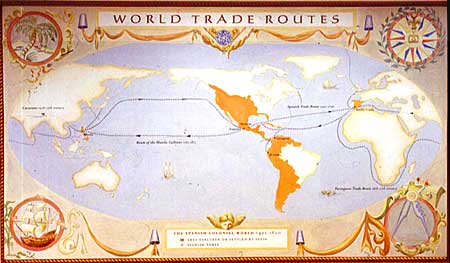|


Lynn
Osborne, 2002
The import and export of both pots and potters
to and from the Iberian peninsula helped to shape this art
form. In the 10th century, Muslim potters introduced mayólica
production to Spain. For the next 500 years, mayólica
made in Spain was based primarily on Islamic design. Following
the completion of the reconquest of Spain by the Christians
in 1492 and the subsequent expulsion of the Muslims which
culminated in 1609, artistic influences from other areas began
to take hold. Italian, Chinese, and French ceramics proved
to have the greatest impact on the Spanish potter’s
art. Spain, in turn, introduced mayólica to
its American colonies soon after Columbus’s arrival
in 1492. In colonial New Spain, potters combined Spanish,
Chinese and indigenous motifs to create a thoroughly Mexican
style.
|